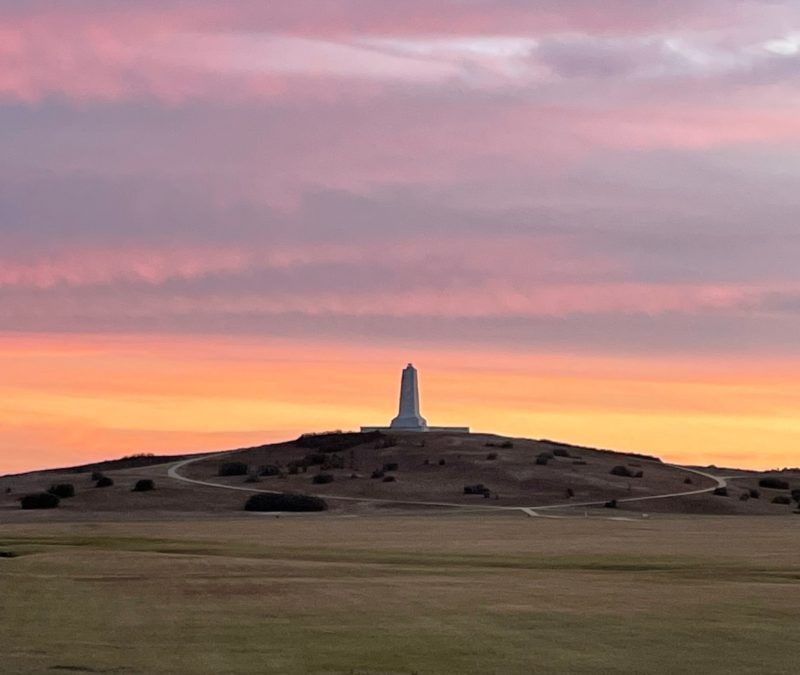When Wilbur and Orville Wright made the trek from Dayton to Kitty Hawk each year from 1900 to 1903 to test their gliders and their flyer, they relied on the sand dunes known as “Kill Devil Hills” to provide the ideal testing ground. But sand dunes are constantly shifting, and by 1928, the 25th anniversary of the first flight, the landscape looked a lot different than what the brothers first saw. “Big Kill Devil Hill,” the biggest of the sand dunes (and the same one the brothers leapt from hundreds of times), had migrated about 450 feet southeast with the help of the strong winds that drew Wilbur and Orville here.
To honor the brothers’ achievement, a national memorial in Kill Devil Hills was established, and the call to construct a monument atop “Big Kill Devil Hill” came. But to build a massive 60-foot-tall granite monument on top of the dune, it had to be stabilized first. Grasses and shrubs were planted so their roots could plunge deep into the sand and prevent further movement, and the art-deco-style monument was completed in 1932.
In the decades since, “Big Kill Devil Hill” became so stabilized by the grasses and shrubs that trees have been able to take root and grow up to 10 feet tall, obstructing the view from both the top and the bottom of the hill. Other dense vegetation also crowded the walking paths that lead up to the monument.
To restore the hill to its 1930s condition, the maintenance team at Wright Brothers National Memorial employed some new technology and a crew of specialists. They started by using a remote-controlled lawn mower, roughly the size of a shopping cart, that can mow, chip and mulch the dense vegetation on the steep hillsides where a riding lawn mower wouldn’t be safe to use. This cleared the grasses and small shrubs, but the mower wasn’t designed for large bushes or trees. That’s where the North Carolina Conservation Corps Women+ Sawyer Crew came in. These highly trained advanced chainsaw specialists arrived on site in December 2021 and made short work of the remaining overgrowth, clearing the north side of the hill in a few days.
“Just seeing that and knowing that you’re making a difference is… indescribable,” said sawyer Harlee Craddock.
Now when you look up to the monument from the bottom of the hill, it looks much like it did when the grasses were freshly planted, without the forest. Keeping the dune clear of vegetation will be an uphill (pun intended) battle, as the grasses and shrubs will always keep growing, but the maintenance team is now much better equipped to handle the job. If you see them mowing, give them a little extra room so you can both be safe. And enjoy the view from the top – no more trees will be in your way!
Adapted from the National Park Service. Originally published in the 2022 edition of the Outer Banks Group’s “In The Parks” newspaper.

